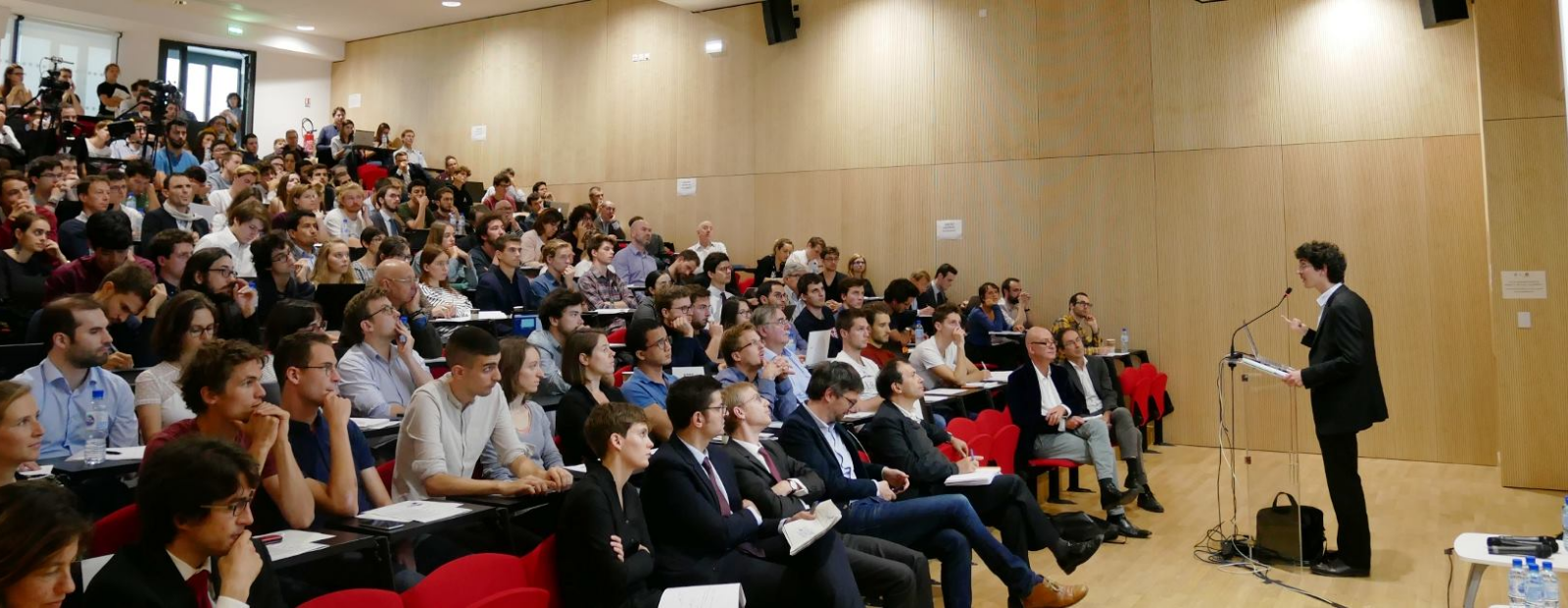Published in
- Associate Professor
- WIL Codirector
- EHESS
- World Inequality Lab
- Member of the Global Inequalities Laboratory
Research groups
Research themes
- Income and Wealth inequality
- Wealth, income, redistribution and tax policy
Contact
Address :48 boulevard Jourdan,
75014 Paris, France
Campus:
Campus Jourdan
Declaration of interest
See the declaration of interest
Tabs
Domaines de recherche
- Economie publique, Economie des inégalités
- Histoire économique
- Développement et distribution
Documents de travail
The World Top Incomes Database: accéder au site Internet
In refereed journals
- A Note on the Relationship between Top Income Shares and the Gini Coefficient ; Economics Letters, forthcoming.
- Income and Wealth Concentration in Spain from a Historical and Fiscal Perspective, with Emmanuel Saez ; Journal of the European Economic Association, 7(5) : 1140-1167, 2009.
- Top Incomes and Earnings in Portugal 1936-2005 ; Explorations in Economic History, 46(4) : 404-417, 2009.
- The Monetary Method to Measure the Shadow Economy : The Forgotten Problem of the Initial Conditions, with Hildegart Ahumada and Alfredo Canavese ; Economics Letters, 101(2) : 97-99, 2009.
- The Monetary Method and the Size of the Shadow Economy : A Critical Assessment, with Hildegart Ahumada and Alfredo Canavese. Review of Income and Wealth, 53(2) : 363-371, 2007.
- La Méthode Monetaire pour l’Estimation de l’Économie Informelle : Une Étude Critique de ses Usages, with Hildegart Ahumada and Alfredo Canavese, Revue Économique, 60(5) : 1069-1078, 2009.
Chapters in books
- Income and Wealth Concentration in Spain in a Historical and Fiscal Perspective, with Emmanuel Saez ; in A. Atkinson and T. Piketty (editors) Top Incomes vol. II : A Global Perspective, Oxford : Oxford University Press, 2010, Chapter 10 (longer version of Alvaredo and Saez, 2009, ut supra).
- Top Incomes and Earnings in Portugal 1936-2005 ; in A. Atkinson and T. Piketty, op. cit., Chapter 11 (longer version of Alvaredo, 2009, ut supra).
- The Rich in Argentina over the Twentieth Century 1932-2004 ; in A. Atkinson and T. Piketty, op. cit., Chapter 6.
- Top Incomes in Italy 1974-2004, with Elena Pisano ; in A. Atkinson and T. Piketty, op. cit., Chapter 12.
- The Dynamics of Income Concentration in Developed and Developing Countries : A View from the Top, with Thomas Piketty ; in L. Lopez-Calva and N. Lustig (editors) Declining Inequality in Latin America : A Decade of Progress ?, Chapter 4 ; Washington DC : The Brookings Institution, 2010.
Publications HAL
-
Inequality Bands: Seventy-five years of measuring income inequality in Latin America Journal articleJournal: Oxford Open Economics
-
The concentration of personal wealth in Italy 1995-2016 Journal articleJournal: Journal of the European Economic Association
Published in
-
Top incomes in South Africa in the twentieth century Journal articleJournal: Cliometrica
Published in
-
Income inequality under colonial rule. Evidence from French Algeria, Cameroon, Tunisia, and Vietnam and comparisons with British colonies 1920–1960 Journal articleJournal: Journal of Development Economics
Published in
-
-
Distributional National Accounts Guidelines Methods and Concepts Used in the World Inequality Database ReportAuthor: Jonathan Goupille
Published in
-
Towards a System of Distributional National Accounts: Methods and Global Inequality Estimates from WID.world Journal articleJournal: Economie et Statistique / Economics and Statistics
Published in
-
Distributional National Accounts Guidelines, Methods and Concepts Used in the World Inequality Database ReportAuthor: Jonathan Goupille
Published in
-
Towards a System of Distributional National Accounts: Methods and Global Inequality Estimates from WID.world Journal articleJournal: Economie et Statistique / Economics and Statistics
Published in
-
Measuring lnequality in the Middle East 1990–2016: The World’s Most Unequal Region? Journal articleJournal: Review of Income and Wealth
Published in


